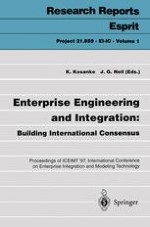ICEIMT '97 is the second International Conference on Enterprise Integration and Modeling Technology. Like the first, it is the main event of a European-US initiative on building consensus in enterprise engineering and integration - supported in Europe by Esprit and in the USA by DOC/NIST. These proceedings contain papers presented at the conference and at five international workshops preceding the conference. The workshops addressed integration issues related to people and organization, metrics and standardization, applications, fundamentals and principles, and users and vendors. The conference papers present points of view of users, vendors, and researchers, the current state of research and development worldwide, and the needs to be identified and summarized in project proposals.
